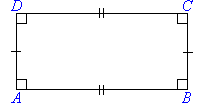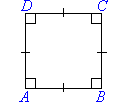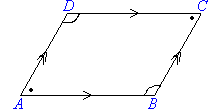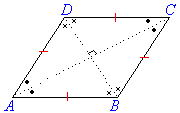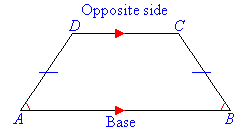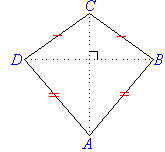Monday, November 9, 2015
Tuesday, October 20, 2015
Tuesday, October 6, 2015
Tuesday, June 23, 2015
Thursday, June 18, 2015
Burj Al Arab
Name of the building: Burj al Arab
Authors: Atkins, Tom
Wright and Jumeirah the developer ( Jumeirah Comàny is a Dubai-based international luxury hotel chain and part of Dubai Holding)
Date: 1994-199
Style: The shape of the building is like a half moon
The Authors
Tom Wright was born in Croydon, Greater
London in 1957. Wright
studied at the Royal
Russell School and then later at the Kingston University School of Architecture. He qualified as an architect in
1983. Wright went on to become a director of the architectural practice Lister
Drew Haines Barrow, which was taken over in 1991 by Atkins.
Wright became head of Atkins' architecture arm.
WS Atkins plc (commonly known as Atkins)
is a British multinational engineering, design, planning, project management and consulting Services
Company headquartered in Epsom, United Kingdom. It was founded in 1938 by Sir
William Atkins.
|
Burj al Arab
|
|
|
|
|
|
Cost:
|
$650
million
|
|
Location:
|
Dubai
|
|
Uses:
|
It is
use like an Hotel
|
|
Construction
|
|
|
Start
|
1994
|
|
Finish:
|
1999
|
|
Dimensions:
|
197.5 m
|
|
Height:
|
321 m
|
|
Floors:
|
60
floors (202 suites)
|
|
Lifts/elevator
|
18
|
History and interesting things
On the hotel
roof is a heliport, which was used as a tennis court for advertising involving Roger
Federer and Andre Agassi, but that, despite what many believe, is not used as
field tennis.
The interior
decoration of the building was carried out by Chinese designer Khuan Chew. The
instructions el Jeque of Dubai gave Chew for the design of the suites and
atrium were hit and innovate. Khuan and his team used large quantities of
marble, velvet and leaflets of ore for decorate. Six months before the
inauguration, Sheikh visited the hotel to give his opinion. The majesty of the
suites met his expectations of luxury and grandeur show, but seeing the
painting of a minimalist atrium, failed. The decorator had to redesign the look
of the lobby, adding bright colors on the roof, dancing fountains, a spectacle
of colored lights and giant aquariums.
The Prices of
the rooms varies between $ 2,500 and $ 40,000 per night. The design of the
suites unites East and West. The bathrooms are with mosaics. The Royal Suite, is
valued at $ 137,716 per night, is in the world ranking of the 15 most expensive
hotel rooms, done by CNN Go in 2012.
The Burj Al
Arab has nine restaurants, among them the Al Mahara -under the sea, offering an
underwater view through a stained glass window as aquarium and Al Muntaha,
located 200 meters high, and allowing a view of the city of Dubai.
The clients
have the ability to request a Rolls Royce Silver Seraph for transport. The cars
were imported from Britain. Clients can also request a helicopter that goes
straight to the hotel located on the helipad
0pinion
This
building since I knew about it, I loved it. I like this entire beautiful hotel
and the most incredible thing is that is on a small island on the beach. My
favorite part of the hotel is that has some restaurants with gorgeous views.
One of the restaurants is over the sea so you can see the sea wildlife. And
another restaurant you can see a panoramic view of Dubai.
My drawing
By Valeria Moreno Ruedas 3ºC
TECHNOSPHERE OF DUBAI by Sara Zapico Linares 3rd ESO C

The concept of this iconic building for the Techno sphere of
The Techno sphere has several key technology systems and architectural
spaces that will
enable the building to generate a self breathing environment as well as
generate electricity
from solar power to supplement the energy needs of the building.
from solar power to supplement the energy needs of the building.
LOCATION OF THE BUILDING AND STYLE
The
Aldar HQ building is located in Raha Beach ,
a new
city Abu
Dhabi .
Its
architectural style is called structural expressionism also known as High-Tech modernism.
This
style is an advanced modernism in which buildings display their structural
elements inside and out. Structures in this style tend to have a metallic
appearance.
The
Aldar HQ is the first circular skyscraper in the world. The construction was
completed using a steel diagonal grid to sustain the circular shape and then
covered with glass panels.
Marwan
Zgheib decided to create a simple building that would possess the calm and
ideal beauty but also have expressive power.
BIOGRAPHY
JAMES
LAW- THE FATHER OF CYBERTECTURE
He is an
Architect an Interior Designer and a Technologist with a love for Design and
Art. He runs his own design company James Law Cybertecture. He also is a Young
Global Leader of World Economic Forum a founder of NGO Cybertecture for
Humanity. On most of his free time e runs a Young Architect Program for kids. He is an
occasional TED speaker and teach part time in universities in Hong Kong . Combining
technology and architecture, Law has designed some of the most innovative
projects in the world, including the world's first artificial intelligent media
laboratory for the Hong Kong
HIS LIFE
Born in Hong Kong and
raised in the United Kingdom
His passion for
architecture eventually led him to study the discipline at the University
College London, under renowned visionary architect Peter Cook. Upon graduation
in 1992, Law took up his first job as an architect at the firm of prestigious
Japanese architect Itsuko Hasegawa in Tokyo
Following this, Law moved back toHong Kong in
1997 to take up a position as the Director of Gensler International, one of the
largest design firms in the world, and to focus on technology projects.
Following this, Law moved back to
MY OWN DRAWING
OPINION
In my personal opinion,
this sphere is a huge and innovating idea because it is an eco-friendly building
which helps to reduce the amount of pollution we create regularly, and show us
that, if we were able to produce all buildings yhis way, we will conserve our
world for longer
Sunday, June 14, 2015
My mother´s blog: Vintage & Chic
My mother is a decor blogger. Her blog is called Vintage & Chic. She started the blog seven years ago to share ideas and inspiration for decorating homes. In her blog you will also find some D.I.Y. (Do it yourself) and the work of some photographers and artists. Since the beginning of the blog she has published more than two thousand and five hundred posts. Now I´m going to share with you some of my favourite photos and one video, that I have found there.
Let´s start with the video: an incredible watercolour portrait.
Now let´s continue with some images, most of them related with art and photography.
Under each photo you will find a link to the author´s website.
Artist: Anna Wili Highfield
Artist: Lorraine Loots
Artist: Olga Protasova
Artist: Eldar Zakirov
Artist: Fashion cartoons
Let´s start with the video: an incredible watercolour portrait.
Now let´s continue with some images, most of them related with art and photography.
Under each photo you will find a link to the author´s website.
Artist: Anna Wili Highfield
Artist: Lorraine Loots
Artist: Olga Protasova
Artist: Eldar Zakirov
Artist: Fashion cartoons
Catedral Basílica Menor Nossa Senhora da Glória
The cathedral of Maringá is a Roman Catholic cathedral located in downtown Maringá, Paraná, Brazil. The architect was José Augusto Bellucci, he started it in 1958 and he finished it in 1975.
HISTORY OF THE BUILDING:
The architect José Augusto Bellucci was inspired by the Soviet sputnik satellites when he designed the cathedral's modernist, conical shape. The design was idealized by the archbishop Dom Jaime Luiz Coelho.
STRUCTURE AND MATERIALS:
The cathedral is madre up pf glass, stone, marble and concrete.
It is the tallest church in South America and the 16th in the world. It´s height is 125m.
It´s architectural style is futurism.
OPINION:
In our opinion this cathedral has a very original desing and it´s very huge.
Guadalupe Tuero and Isabel Pellico 3ºC


Golden ratio in Human face
Phi ( Φ = 1.618033988749895… ), most often pronounced
fi like “fly,” is simply an irrational number like pi ( p =
3.14159265358979… ), but one with many unusual mathematical properties.
The design of Human
face is based on a “Golden Ruler, a ruler composed of golden ratios within
golden ratios. It has long been known that the Golden Section, (also Golden
Ratio or Divine Proportion), appears in certain proportions of living
organisms.
Leonardo Da Vinci has long been associated with the
golden ratio.Da Vinci created the illustrations for the book “De Divina
Proportione” (The Divine Proportion) by Luca Pacioli. It
was written in about 1497.In the book, Pacioli writes of mathematical and
artistic proportion, especially the mathematics of the golden ratio and its
application in art and architecture.
Phi ( Φ = 1.618033988749895… ), most often pronounced
fi like “fly,” is simply an irrational number like pi ( p =
3.14159265358979… ), but one with many unusual mathematical properties.
The design of Human
face is based on a “Golden Ruler, a ruler composed of golden ratios within
golden ratios. It has long been known that the Golden Section, (also Golden
Ratio or Divine Proportion), appears in certain proportions of living
organisms.
Leonardo Da Vinci has long been associated with the
golden ratio.Da Vinci created the illustrations for the book “De Divina
Proportione” (The Divine Proportion) by Luca Pacioli. It
was written in about 1497.In the book, Pacioli writes of mathematical and
artistic proportion, especially the mathematics of the golden ratio and its
application in art and architecture.
Saturday, June 13, 2015
NEWTON’S CENOTAPH
It’s a neoclassical building, similar to
Greek and Roman mausoleums.
ARCHITECT
Étienne-Louis Boullée was born in Paris, in 1728 and died in 1799. He was a visionary architect, theorist and teacher. He wanted to be a painter, but, following the wishes of his father, he turned to
architecture. He opened his own studio with 19 years old. He designed several mansions in Paris in the 1760s and ‘70s, like the Hôtel de Brunoy. He teached in the Ecole Nationele des Ponts et Chaussées and in the Académie Royale d’Architecture in Paris. His works were innovative, from the Neoclassicism.

HISTORY OF
THE BUILDING
Although it
has never been built the drawings were engraved and circulated between some of
the most important architects of the era. They said he was a megalomaniac and
until the twentieth century its work wasn’t published. Nowadays the drawings
and plans are in the National Library of Paris.
STRUCTURE AND
MATERIALS
The
cenotaph (a monument dedicated to the memory of someone, but with no body
preserved inside) is a large sphere of 150 meters high on a circular base and
covered by cypresses. From the outside, you can only see half the
sphere, supported by two cylinders.
The
building represents the land and Newton’s discoveries. Its access is in the
base and, no matter the size, only a small area in the base can be occupied.
Its surface is perforated, so that sunlight can enter during the day and create
a picture of the night sky. During the day a great artificial light in the
centre of the sphere represents the daytime. Light represents Newton, lighting
the knowledge of mankind.
IMPRESSIONS
It is a
huge and very simple building. It hasn´t got any unnecessary decoration and it
expresses its function. For me it’s gorgeous and well balanced.
Marta de Sevilla 3ºC
LA GEODE
La Geode is a mirror-finished geodesic dome that holds an Omnimax theatre in Parc de la
Villette at the Cité des Sciences
et de l'Industrie (City of Science and
Industry) in the 19th
arrondissement of Paris,
La Géode was designed by architect Adrien Fainsilber and engineer Gérard
Chamayou. The geodesic dome is 36 metres (118 ft) in diameter, composed of 6,433 polished stainless steel equilateral triangles that form the sphere that reflects the sky. It stands on a reinforced concrete
based, which is attached to Cité des Sciences et de l'Industrie, the largest
science museum in Europe. La Géode officially opened on May 6, 1985. After a
similar venue located in La Défense closed in 2001, La Géode became the only spherical building in
the Île-de-France region of France. It cost 130 million French francs to build.
Before the name "Géode" was selected, other names were
proposed, including humorous suggestions such as "Bouboule",
"Irma", "Minouchette", "Double Zéro", and
"Zézette".
Movies are projected in IMAX format on a giant hemispherical screen that covers 1,000 square
metres (11,000 sq ft). The auditorium is fitted with a 12 point sound
system with four large subwoofers that deliver 210,000 watts in surround sound designed by Cabasse. The IMAX films, presented in high definition and Géode 3D-relief, feature science, nature, and travel
documentaries, short and long feature-length films, and high definition
animated subjects. It also presents satellite concert events, including live
broadcasts of the Metropolitan Opera from New York City.
·Cité des Sciences
et de l'Industrie, City of Science and
Industry, the largest science museum in Europe
·Cité de la musique, City of Music, an interactive museum of historical musical instruments
and a concert hall
·Le Zénith, a concert arena in Parc de la Villette
ADRIEN FAINSILBER
Adrien Fainsilber born in 1932 in Nouvion in
Thiérache is an architect and urban planner Frence
Graduated in 1960 at the École nationale
supérieure des Beaux-Arts in Paris , Adrien Fainsilber worked at the agency landscape architect Hideo Sasaki , atCambridge , in Massachusetts .
Back in France, he is responsible for studies at the Institute of
development and urban planning in the Paris Region (IAURP) and he participates in the first implementation of
the Master Plan for
the Île-de-France region .
He founded his agency in 1970 after winning the competition for the university town Villetaneuse (competition won in association with Hogna
Sigurdardottir-Anspach).
He won the National Grand
Prize for Architecture in 1986 .
In 1992 , he founded a limited liability
company with seven partners, AFA
architecture firm (Adrien Fainsilber and Associates), now "AFA
Workshops" whose offices are located rue Barrault in Paris .
·1970 Paris-Nord
University , literary and legal
center, Villetaneuse - 42 805 m 2
·1974 442 HLM housing / ILM - Salvador-Allende City, Villetaneuse - 39 669 m 2
·1975 University of
Technology of Compiègne - 17,000
m 2 to 1975
·1975 Deutsches Institut Polytechnique of the University of
Paris Nord , Villetaneuse - 41 000 m 2
·1975 Medical House, Magnanville - 230 m 2
·LIMHP 1977 CNRS - Laboratory of molecular interactions and high
pressures, Villetaneuse - 2500 m 2
·1978 Youth Club workers - 120 rooms Saint-Quentin-en-Yvelines - 2363 m 2
·1980 Edouard Manet Nursery School, Saint-Quentin-en-Yvelines - 1066 m 2
·1980 274 public housing units, Saint-Quentin-en-Yvelines
·1981 Centre EDF / GDF, Paris La Défense - 33000 m 2
·1981 Hospital of Evry - 37 156 m 2
·1983 72 PLA housing - ZAC du Canal, Evry - 6732 m 2
·1985-1986 Cité des Sciences
et de l'Industrie and La Geode in Paris - 165 000 m 2
·1987 Administration Center, CSI La Villette
- 8627 m 2
·1990 Lycée Philibert Delorme, L'Isle-d'Abeau - 13 000 m 2
·1991 Persons Aged Visitor Centre - CHU Kremlin
Bicetre - 15 377 m 2
·1992 Business Center Pont de Bercy, Paris - 12 000 m 2
·1992 Block Medical and Surgical - Hospital of Vichy - 4000 m 2
·1992 Museum of Art
Roger-Quilliot of Clermont-Ferrand - 6698 m 2
·1994 New City Hall of La Flèche - Restructured: 959 m 2 - New: 1825 m 2
·1995 129 homes in Bagneux - PC and PLA - 27 812 m 2
·1995 163 student housing, Montpellier - 9793 m 2
·63 apartments in 1996, the Academy Park, Montpellier - 6721 m 2
·1996 85 public housing units, block G Faluche, Montpellier - 6355 m 2
·1996 incineration plant for household waste at Rennes - 5088 m 2
·1997 National School of application of territorial frameworks, Montpellier - 4043 m 2
·1998 Museum of Modern
Art and Contemporary Strasbourg - 14 000 m 2.
·1996-1999 The mutual Institute
Montsouris - Paris 16th.
·1998 CHU Purpan Children Hospital of the University Paul
Sabatier in Toulouse - 23 200 m 2 to 1,998
·2000 60 apartments, terraces Marianne, Montpellier - 6000 m 2
·2001 Courthouse of Avignon - 11 000 m 2.
·2001 Office building, Altadis, Paris 75013-15 500m 2-2001
·2002 Richter Etoile, Place Ernest Granier, Montpellier - 12 700 m 2 of office
·2003-2007 Woman-Mother-Child
Hospital in Bron , HFME - 64 000 m 2
·2003 Faculty Medicine-Pharmacy in Besançon - 6000 m 2
·2004 Expansion of the wastewater
treatment plant of Valenton ( SIAAP ) - 30 876 m 2
·2004-2007 Juvenile Prison
Establishment , 4 institutions: in
Toulouse, Mantes-la-Jolie, Nantes and Marseille - 5400 m 2 per
site
MATERIALS
It is 36 metres of diameter,
it’s made up of 6.433 equilateral triangles made up of steel that reflects
light like a mirror.
OPINION
I like this building
because is very big and modern, it’s very cool, and I wish I could have it near
here. It’s very beautiful too, I like it because it reflects light like a
mirror.
IT IS USED TO
Watch films. Films are
projected in a 1.000m2 screen. Films projected there, last less than a hour.
Saúl Casta and Ariane Álvarez
Subscribe to:
Posts (Atom)

